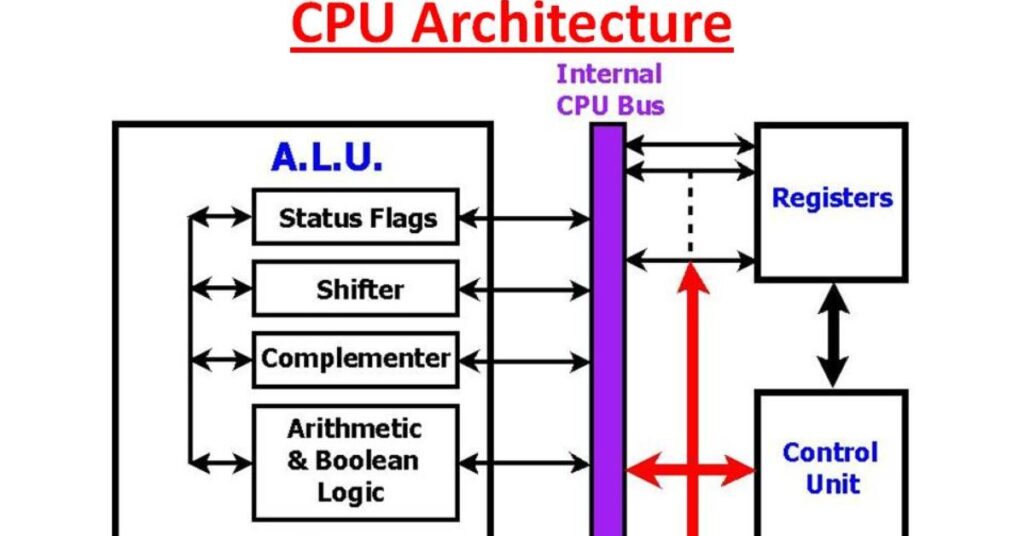Have you ever pondered how your computers intelligence evolved? Lets explore the captivating realm of CPUs. In the past computers used to be large and sluggish. However with the introduction of the microprocessor a chip that revolutionized everything things took a turn.
Initially computer designs were basic. Could only perform tasks. Engineers craved capabilities and sought more power to push boundaries. Over time the speed and intelligence of CPUs have significantly improved.
They have become adept, at handling tasks and processing data at a rapid pace. Modern processors showcase engineering feats, housing billions of transistors within a space no than a fingernail. These technological marvels play a role in driving our realm supporting devices ranging from smartphones, to supercomputers.
The Birth of Microprocessors
Back, in the 1970s a group of individuals had an idea; “What if we could make a computers brain smaller?” They managed to condense the components into a chip giving birth to the microprocessor, which revolutionized everything.
Intel took the lead with their 4004 chip. While it may not seem like much compared to todays technology it truly revolutionized the industry. In an instant computers became more compact, affordable and efficient. It felt as though the world had been bestowed with a superpower.
Related this post : Step-by-Step Guide to Creating a High-Performance DIY Computer
Early CPU Architecture

The early CPUs were quite straightforward. They consisted of a components; the control unit, arithmetic logic unit and registers. These elements functioned harmoniously carrying out commands and performing calculations efficiently.
Even basic tasks can exhibit intelligence. The initial processors employed tactics such, as pipelining to enhance speed. It functions akin, to a data assembly line ensuring the chip remains active and effective. Each minor enhancement mattered greatly in an era of processing capabilities.
The Rise of 8-bit CPUs
During the 1970s 8 bit CPUs became increasingly prominent leading to data processing capabilities that enhanced the speed and performance of computers. Notably the Zilog Z80 and MOS 6502 emerged as players during this advancement.
Those chips were the driving force, behind the home computers and gaming consoles. Who could forget the Apple II or the Nintendo Entertainment System? It was like witnessing 8 bit sorcery in action. Computers were no longer, for tech enthusiasts; they were seamlessly integrating into our routines.
Advancements in 16-bit CPUs
Moving to 16 bit CPUs marked an advancement. These processors had the capacity to manage amounts of data simultaneously resulting in more powerful computers. Leading the forefront were known chips such, as the Intel 8086 and Motorola 68000.
These processors ushered in an era of software and gaming possibilities. They fueled the operation of devices such, as the IBM PC and the early Macintosh computers. The advent of 16 bit processing set the stage for the development of programs and improved graphics.
Introduction of 32-bit Processors

32-bit CPUs took computing to new heights. They could work with much more memory and perform more complex calculations. Intel’s 80386 and Motorola’s 68020 were game-changers in this era.
- Increased address space
- Better multitasking capabilities
- Support for advanced operating systems
- Improved performance for scientific and graphical applications
The Shift to Multi-core CPUs
Single-core CPUs hit a wall. They couldn’t get much faster without overheating. The solution? Multiple cores on one chip. It’s like having several brains working together.
Multi-core processors let computers handle more tasks at once. They’re great for multitasking and demanding applications. This shift changed how software is written to take advantage of parallel processing.
The Role of CPU Caches
CPU caches are like the chip’s short-term memory. They store frequently used data close to the processor for quick access. This speeds up overall performance significantly.
- L1 cache: Smallest but fastest
- L2 cache: Larger but slightly slower
- L3 cache: Even larger, shared among cores
- Improved cache designs reduce latency and boost efficiency
The Emergence of 64-bit Computing
64-bit CPUs took things to a whole new level. They can handle massive amounts of memory and perform incredibly complex calculations. This was crucial for high-end workstations and servers.
Now, 64-bit processors are common in personal computers and even smartphones. They enable more powerful software, better graphics, and smoother performance across the board. The extra bits open up new possibilities for future innovations.
Technological Breakthroughs and Innovations
| Aspect | Technological Breakthroughs | Innovations |
| Nature | Fundamental, game-changing discoveries | Improvements or novel applications of existing technology |
| Impact | Often reshape entire industries or fields | Typically enhance products, services, or processes |
| Frequency | Relatively rare | More common and ongoing |
| Time to Market | Usually longer, may take years or decades | Generally shorter, can be months to a few years |
| Risk | Higher risk, outcomes less predictable | Lower risk, more controllable outcomes |
| Examples | Electricity, Internet, DNA sequencing | Smartphones, electric cars, social media platforms |
| Scope | Broad, affecting multiple sectors | Often focused on specific industries or applications |
| Investment | Typically requires significant R&D funding | Can be achieved with varying levels of investment |
| Skill Level | Often requires specialized scientific knowledge | Can be driven by diverse skill sets and creativity |
| Market Readiness | May require time for market to adapt | Usually aligned with current market needs or trends |
The Era of Integrated Graphics
Remember when you needed a separate card for good graphics? Not anymore. CPU makers started building graphics right into their chips. This was a game-changer for everyday computers.
Integrated graphics made machines cheaper and more energy-efficient. They may not cater to gamers. They are ideal, for the majority of users. You can watch videos do photo edits and even enjoy some gaming without needing additional equipment.
Also read this post : Choosing the Right Motherboard A Comprehensive Guide
The Rise of Mobile and Energy-Efficient CPUs
As smartphones took over, CPUs had to adapt. They needed to be tiny and sip power like a bird. This led to a new breed of processors, optimized for mobile devices.
These mobile CPUs learned some neat tricks:
- Switching between high-power and low-power modes
- Using specialized cores for different tasks
- Packing more features into smaller spaces
Current Trends in CPU Development

Today’s CPUs are all about balance. They’re juggling raw power with energy efficiency. Multi-core designs are the norm, letting your computer tackle several jobs at once.
We’re also seeing some cool innovations:
- AI-specific hardware built right into CPUs
- Chips that can change their clock speed on the fly
- New materials that help manage heat better
The Future of CPUs
The future of CPUs looks exciting! Brace yourself for some advancements. Quantum computing is emerging, offering solutions to challenges that todays computers struggle to tackle.
We might also see:
- CPUs that mimic the human brain
- Chips that use light instead of electricity
- Self-healing processors that fix their own errors
These transformations won’t occur immediately. They are, on the horizon. The development of CPU technology is still ongoing. The outlook appears promising with advancements.
frequently asked question
What’s the main difference between a breakthrough and an innovation?
Breakthroughs are fundamental discoveries, while innovations improve existing tech.
Can a small company create a technological breakthrough?
Yes, but it’s rare. Breakthroughs often need substantial resources and time.
How long does it take for a breakthrough to become practical?
It varies, but can take years or even decades.
Are innovations less important than breakthroughs?
No, both are crucial. Innovations make breakthroughs useful in everyday life.
What’s a recent example of a technological breakthrough?
CRISPR gene editing technology is a good example from the last decade.
Conclusion:
In the paced world of technology groundbreaking advancements and creative ideas work hand in hand to propel our era forward. Breakthroughs lay the groundwork, for shifts while innovations ensure that these progressions are usable and within reach, for everyone. Together they act as a duo that consistently molds and transforms our society.
Looking ahead it’s evident that both will have roles to play. Advances, in areas such as quantum computing and biotechnology will push boundaries while new ideas will enhance and implement these findings in ways that’re, beyond our imagination. It’s truly an exhilarating era to be living in observing the development of technology. How it influences all aspects of our daily existence.













